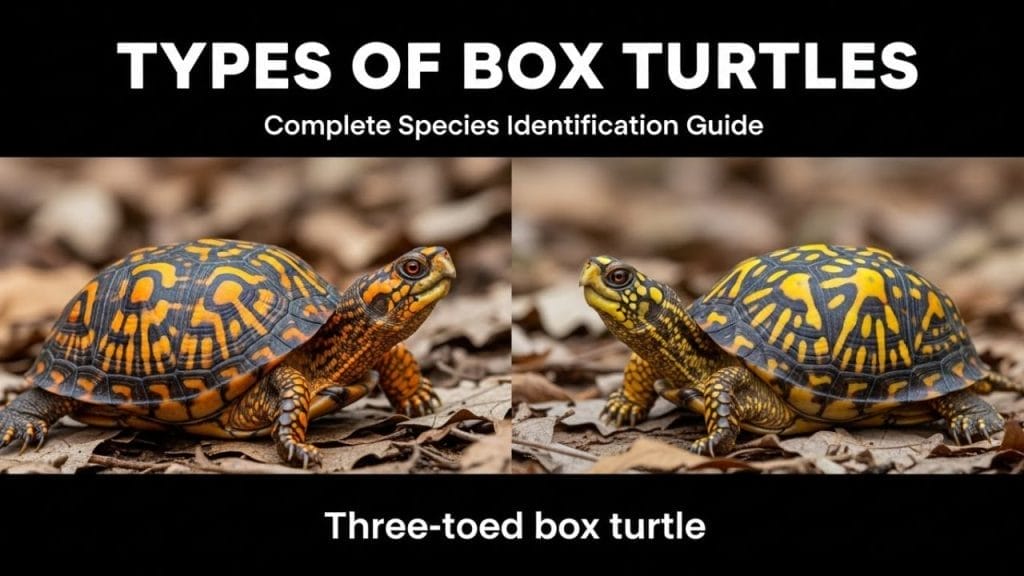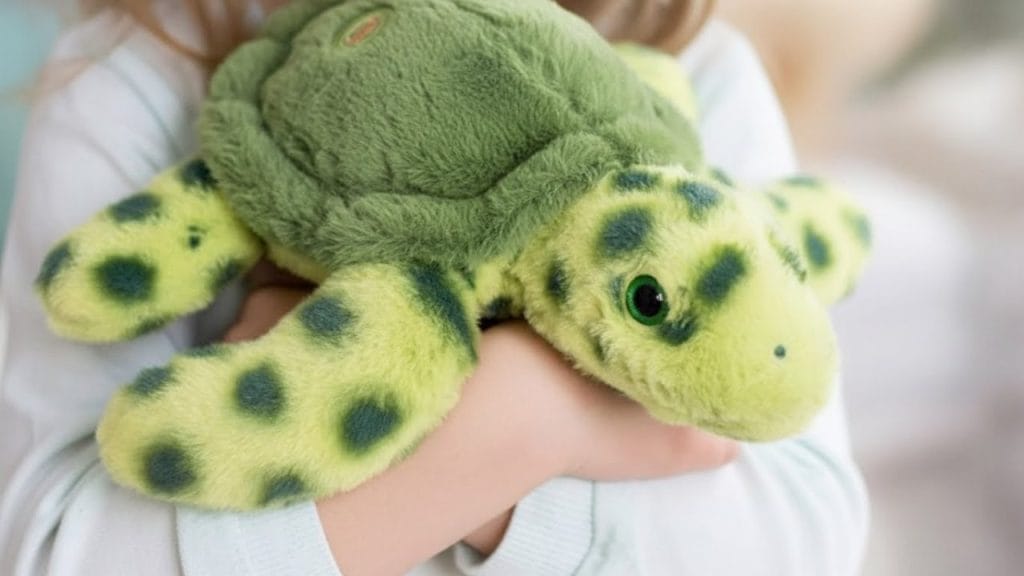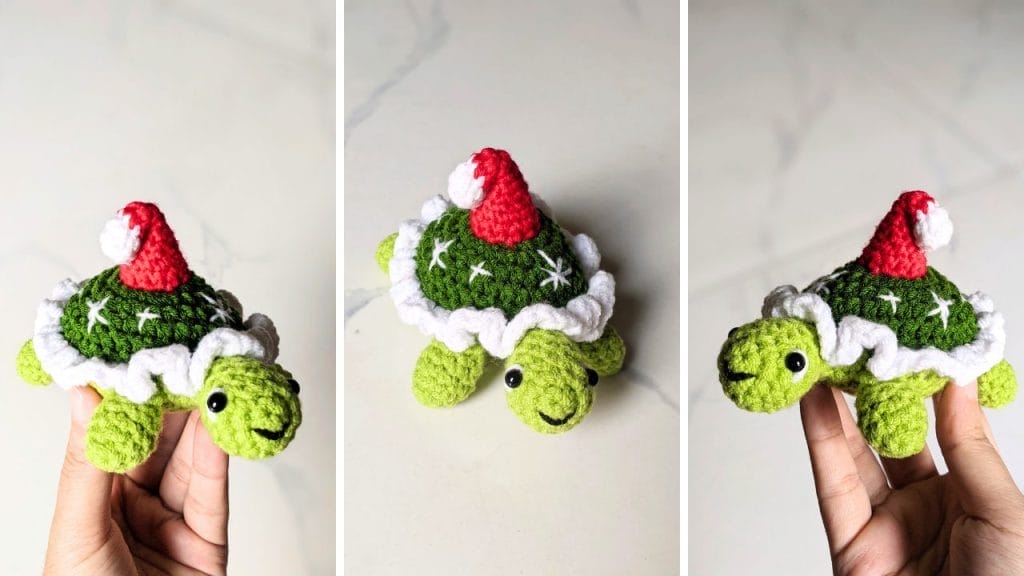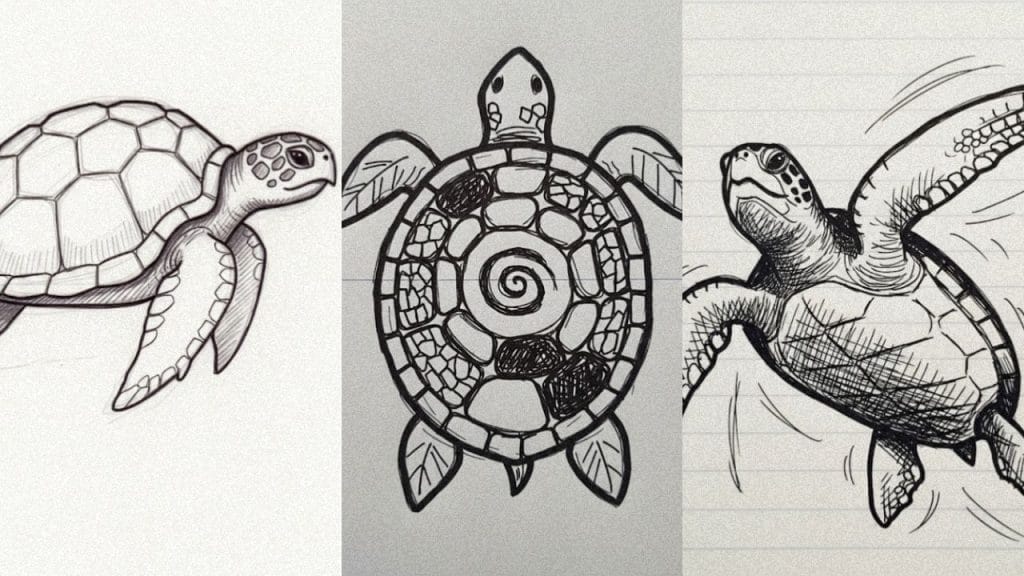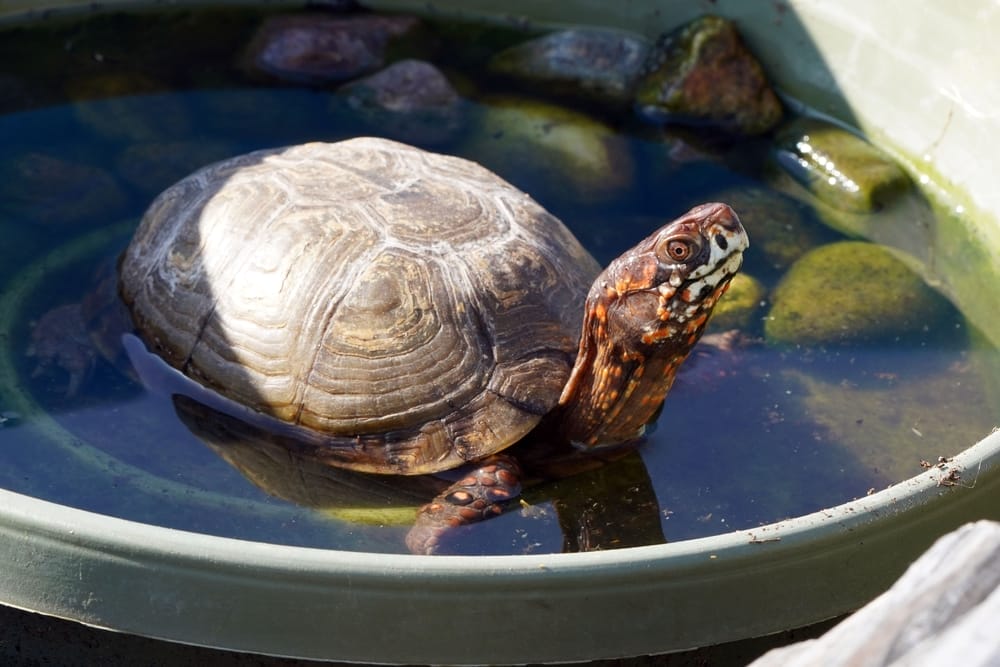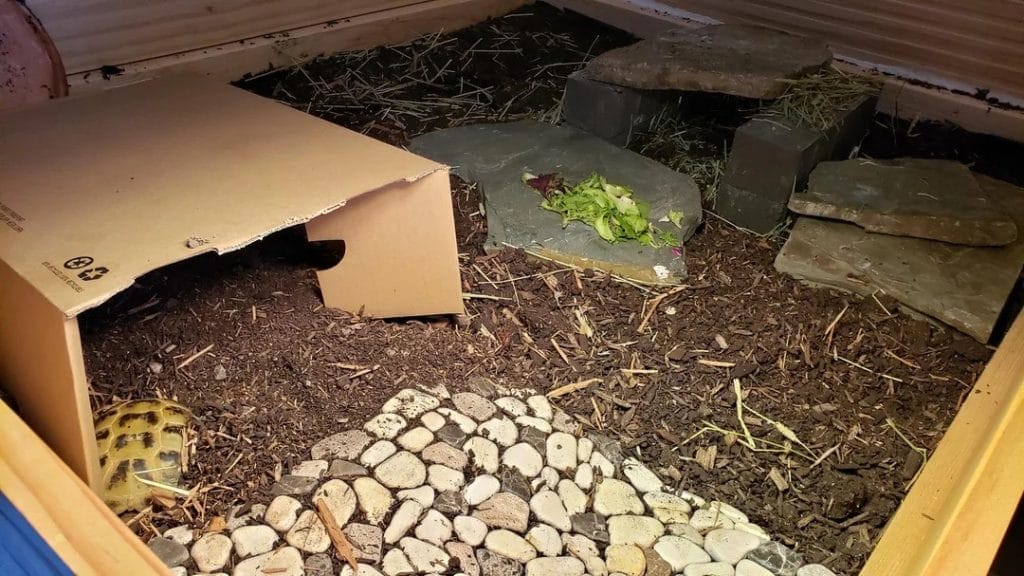How To Take Care Of A Painted Turtle? [Beginner’s Guide 101]

This post was created with help from AI tools and carefully reviewed by a human (Muntaseer Rahman). For more on how we use AI on this site, check out our Editorial Policy.
So you want a painted turtle.
Maybe you saw one basking on a log at your local pond and thought “I need one of those.” Or maybe you’re already the proud parent of a tiny, brightly colored shell baby and suddenly realized you have no idea what you’re doing.
Either way, you’re in the right place.
Here’s the thing about painted turtles: they’re not exactly plug-and-play pets. You can’t just toss them in a bowl with some lettuce and call it a day. These little water demons (I say that lovingly) need proper care, or things go south fast.
But don’t freak out. Once you get the hang of it, keeping a painted turtle happy is totally doable.
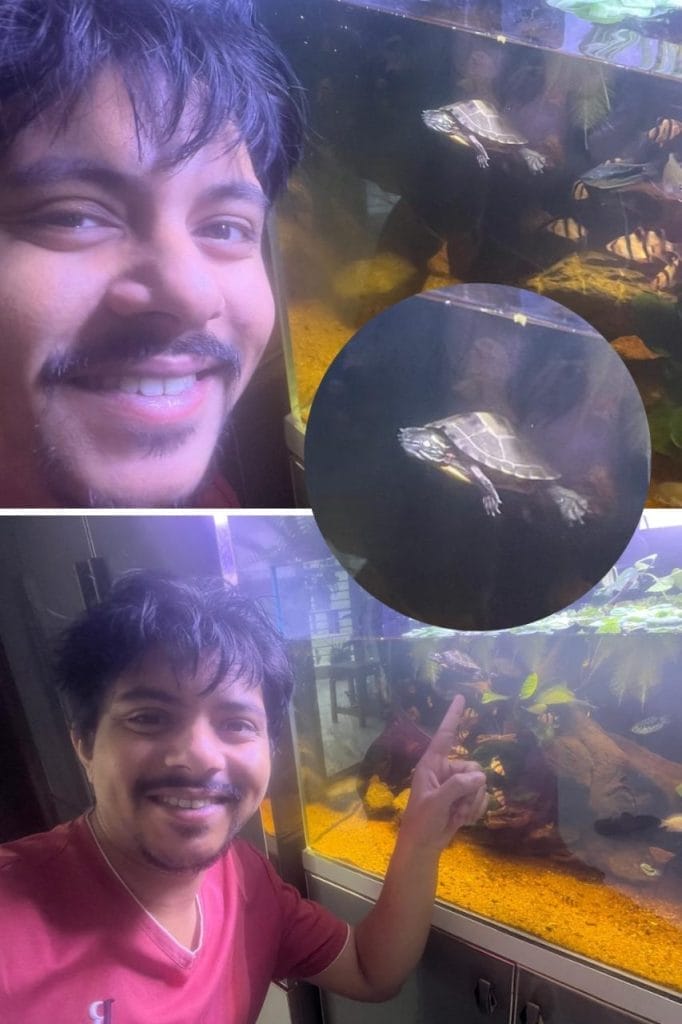
What Makes Painted Turtles So Special?
Painted turtles are some of the most common turtles in North America, found from southern Canada to northern Mexico.
There are four types: Eastern, Western, Southern, and Midland painted turtles.
The Southern painted turtle is the smallest at 4-5 inches, while Western painted turtles can hit 8 inches. Eastern and Midland varieties fall somewhere in between at 5-7 inches.
All of them have that signature dark shell with red and yellow markings that look like someone went wild with a paint palette.
These guys can live up to 40 years when cared for properly. That’s longer than most people keep their cars. So yeah, this is a commitment.

The Four Subspecies: Quick Breakdown
| Subspecies | Adult Size | Key Features | Cold Tolerance |
|---|---|---|---|
| Eastern Painted Turtle | 5-6 inches | Yellow neck stripes, red edges on shell | Extremely high – can be active under ice |
| Western Painted Turtle | 7-8 inches | Dark green shell, vibrant red belly | Very high |
| Midland Painted Turtle | 5-6 inches | Red and yellow markings | Very high |
| Southern Painted Turtle | 4-5 inches | Orange stripe down shell, smallest variety | Lower – needs warmer conditions |
All four subspecies need basically the same care, which makes life easier.
This Hilarious Turtle Book Might Know Your Pet Better Than You Do
Let’s be real—most turtle care guides feel like reading a textbook written by a sleep-deprived zookeeper.
This one’s not that.
Told from the snarky point of view of a grumpy, judgmental turtle, 21 Turtle Truths You’ll Never Read in a Care Guide is packed with sarcasm, sass, and surprisingly useful insights.
And hey—you don’t have to commit to the whole thing just yet.
Grab 2 free truths from the ebook and get a taste of what your turtle really thinks about your setup, your food choices, and that weird plastic palm tree.
It’s funny, it’s honest, and if you’ve ever owned a turtle who glares at you like you’re the problem—you’ll feel seen.
The Tank Setup (Or: How To Build A Turtle Paradise)
Alright, let’s talk housing. This is where most beginners mess up.
Tank Size: Bigger Is Always Better
The general rule is at least 10 gallons of water per inch of shell length.
Since painted turtles can grow up to 10 inches, you’re looking at a 100-gallon setup for a full-grown turtle.
I know, I know. That sounds insane.
For babies, you can start with a 15-20 gallon tank with about 10 gallons of actual water. But plan to upgrade as they grow. These guys are active swimmers and need space to move around.
Pro tip: A Waterland tub is actually better than an aquarium if you can swing it. More natural, easier to maintain, and your turtle will thank you.

Water Depth: Don’t Overthink It
Water should be at least twice the width of your turtle’s shell.
Even babies are strong swimmers, so you don’t need to baby them with shallow water. They’re not going to drown in deep water – that’s literally their natural habitat.
Aim for 10-12 inches deep minimum.
The Basking Area (Non-Negotiable)
Here’s where it gets interesting.
Your turtle needs a completely dry basking area where they can get out of the water. And I mean completely dry – not just barely above water level.
You can use floating docks, stacked rocks, cork bark, whatever. Just make sure it’s stable and easy for your turtle to climb onto.
Why? Because painted turtles need to dry off completely to prevent shell infections and fungal issues.
Substrate: Keep It Simple
Bare bottom tanks are actually preferred because they’re easier to clean.
If you really want substrate for aesthetics, use large river rocks (too big to swallow) or very fine sand that will pass through if they eat it.
Avoid anything medium-sized that could get stuck in their digestive tract. That’s an expensive vet visit waiting to happen.

Temperature: They’re Picky About This
Painted turtles are cold-blooded, which is a fancy way of saying they can’t regulate their own body temperature.
You need to do it for them.
Water Temperature
Keep water between 70-76°F for adults.
Babies need it slightly warmer at 78-80°F.
Get a submersible aquarium heater and a reliable thermometer. Don’t guess. Guessing leads to sick turtles.
Basking Temperature
The basking spot should be 88-94°F.
Use a halogen flood heat lamp positioned directly over the basking area. This gives them that warm sunny spot they crave.
Think of it like this: the water is their house, but the basking spot is their beach vacation.

Lighting: The Secret Ingredient
This is where a lot of people drop the ball.
UVB Lighting Is NOT Optional
UVB is not optional for turtles. Period.
UVB helps them produce vitamin D, which they need to absorb calcium properly. Without it, you get metabolic bone disease, which is a nightmare.
Get a UVB bulb that’s half the length of your enclosure and use a reflective fixture. Position it 8-11 inches above the basking platform if you have mesh, or 13-15 inches if there’s no obstruction.
Replace the bulb every 12 months even if it still lights up. UVB output degrades over time.
Light Schedule
Run lights for 14 hours during summer and 10 hours during winter to mimic natural seasonal rhythms.
Get a timer. Don’t rely on remembering to turn them on and off.

Water Quality: This Will Make Or Break You
Turtles are messy. Like, ridiculously messy.
They eat in the water, poop in the water, and basically turn their tank into a swamp if you’re not careful.
Filtration
Canister filters work best for aquatic turtles.
Get a filter rated for at least double your tank size. If you have a 40-gallon tank, get a filter rated for 80+ gallons.
Trust me on this one.
Water Changes
Even with a great filter, you need regular water changes.
Do 25-50% water changes every 1-2 weeks depending on how dirty things get.
Use a dechlorinator if you have tap water. Chlorine is bad news for turtles.
Water Parameters (For The Nerds)
Test your water weekly or biweekly to make sure ammonia and nitrites are at 0.
KH (carbonate hardness) should be around 80ppm, and GH (general hardness) should be around 180ppm.
Get a basic water testing kit from any pet store.
Tank Cycling (Don’t Skip This)
Before you add your turtle, you need to cycle the tank.
This means adding nitrifying bacteria and ammonia, then waiting until your test kit reads 0 ammonia, 0 nitrites, and some nitrates.
This can take weeks to months. I know it’s boring, but skipping this step causes “new tank syndrome” where toxic buildup makes your turtle sick.

What Do Painted Turtles Eat? (Spoiler: Not Just Lettuce)
Here’s something that surprises people: painted turtles are omnivores, but babies are mostly carnivorous.
As they age, they eat more plants.
Baby Painted Turtles (Under 1 Year)
Feed daily.
Their diet should be mostly protein:
- High-quality turtle pellets (Zoo Med, Omega One, or Mazuri)
- Small feeder fish
- Crickets
- Mealworms
- Bloodworms
- Small amounts of leafy greens
Juvenile Turtles (1-2 Years)
Feed every other day.
Start mixing in more vegetables:
- Turtle pellets
- Insects and small fish
- Romaine lettuce (not iceberg – that’s nutritionally useless)
- Kale
- Dandelion greens
Adult Painted Turtles (2+ Years)
Feed 2-3 times per week.
Diet should be about 50-60% vegetables, 40-50% protein:
- Turtle pellets (2-3 times a week)
- Leafy greens (romaine, kale, collard greens, dandelion)
- Aquatic plants (water lettuce, duckweed, water hyacinth)
- Occasional protein (fish, crickets, earthworms)
Feeding Tips That Actually Matter
Painted turtles must eat in the water because their tongues don’t move freely on land.
So don’t be that person trying to hand-feed them on the basking dock.
A portion of pellets should be about the size of the turtle’s head.
A portion of vegetables should be roughly the size of their shell.
Remove uneaten food within a few hours. Rotting food tanks the water quality fast.
Supplements
Calcium is crucial for shell health.
Keep a cuttlebone or calcium block in the tank at all times. Your turtle will nibble it when they need it.
You can also dust food with calcium powder occasionally.
Foods To Avoid
| Never Feed | Why It’s Bad |
|---|---|
| Iceberg lettuce | Zero nutritional value |
| Avocado | Toxic to turtles |
| Rhubarb | Toxic |
| Raw chicken/ground beef | Carries foodborne diseases |
| Onions and garlic | Toxic |
| Frozen vegetables as main diet | Low in essential vitamins |
| Wild-caught insects from yard | May contain pesticides or parasites |

Baby Painted Turtle Care: The Extra Delicate Phase
Babies need basically the same setup as adults, just scaled down.
Start with a 15-20 gallon tank.
Keep water temperature at 78-80°F (warmer than adults).
Feed daily with high-protein foods.
Babies are more fragile, so watch for signs of illness more carefully. They can go downhill fast.
Winter Care: To Brumate Or Not To Brumate?
In the wild, painted turtles enter brumation (reptile hibernation) during winter by burying themselves in muddy pond bottoms.
They can reduce their metabolism by 99% and survive without food or oxygen for 100 days. Wild, right?
Indoor Turtles
If you keep your painted turtle indoors with stable temperatures year-round, they typically won’t brumate.
Just maintain normal water temps (70-76°F) and lighting schedules. Easy.
If You Want To Brumate Your Turtle
Some keepers believe brumation is important for long-term health and breeding.
Brumation can be dangerous and should only be attempted by experienced keepers or under veterinary supervision.
Never brumate turtles under 4 years old or any turtle that’s sick or injured.
The process involves gradually lowering temperatures over weeks, making sure the turtle’s digestive tract is completely empty, and monitoring them throughout.
Honestly? If you’re a beginner, skip brumation. Keep your turtle indoors with consistent temps.
For more on winter management without brumation, especially for younger turtles, see our guide on taking care of baby turtles in winter.
Southern Painted Turtles And Cold
Southern painted turtles are less cold-tolerant than other subspecies.
If you have a Southern variety and live somewhere with harsh winters, definitely keep them indoors year-round.

Common Health Problems (And How To Spot Them)
Even with perfect care, things can go wrong. Here’s what to watch for.
Respiratory Infections
Signs include excess mucus around the mouth, nose, or eyes (looks like bubbles), nasal discharge, wheezing, gasping, open-mouth breathing, and lethargy.
If your turtle tilts to one side while swimming, that’s pneumonia – the diseased lung is heavier than healthy tissue.
Respiratory infections are often caused by poor water quality, low temperatures, or vitamin A deficiency.
What to do: Get to a reptile vet immediately. This requires injectable antibiotics. Don’t try to treat it yourself.
Many of these health issues stem from the same mistakes beginners make across all turtle species—our top 10 turtle mistakes article explains how to prevent them.
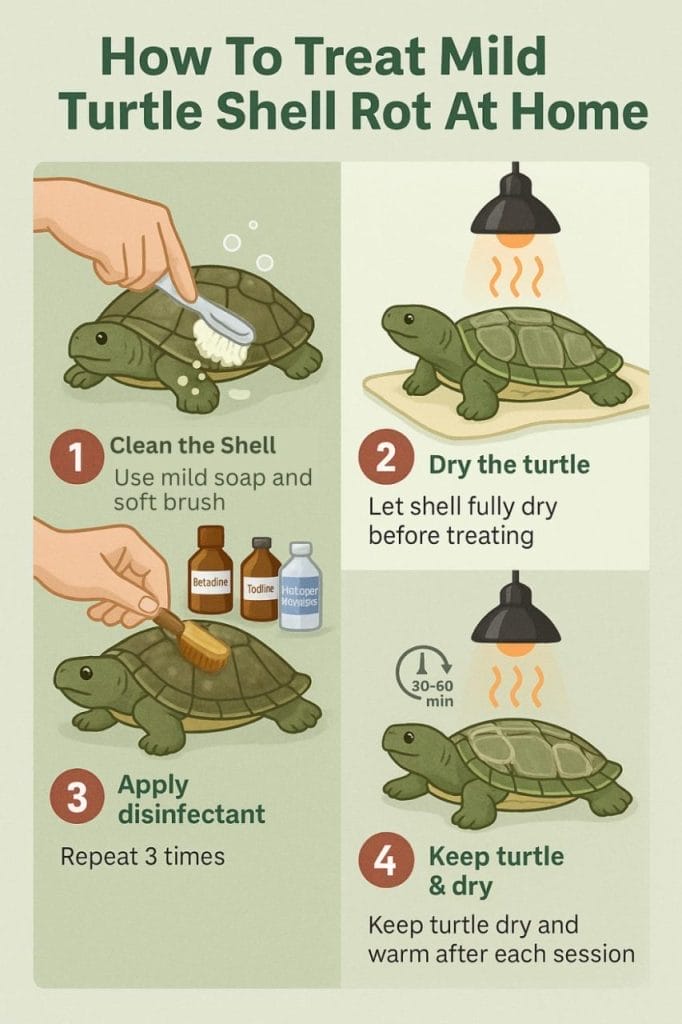
Shell Rot
Shell rot shows up as discoloration, softness, pitting, bleeding, bad odor, or abnormal shedding of shell scutes.
It’s usually caused by poor water quality, injuries, or inadequate basking.
What to do: Clean the affected area gently, improve water quality immediately, and see a reptile vet. They’ll likely prescribe antibiotics and recommend “dry-docking” (keeping the turtle out of water except for feeding).
Metabolic Bone Disease (MBD)
This happens when turtles don’t get enough calcium, phosphorus, or UVB light.
Signs include a misshapen shell or deformed leg bones. The shell might be soft or pyramiding (bumpy growth).
What to do: Fix your UVB setup immediately, add calcium supplements, and see a vet. MBD is serious.
Vitamin A Deficiency
Common in turtles fed only lettuce or low-quality diets.
Causes swollen eyes, thick mucus, lethargy, and makes them prone to respiratory infections.
What to do: Improve diet variety, add vitamin A-rich foods (carrots, squash, dark leafy greens), and consult a vet.
Parasites
Most painted turtles have some internal parasites, but they usually don’t cause problems unless the infestation is severe.
Signs include diarrhea, weight loss, or no symptoms at all.
What to do: Your vet can check for parasites with a fecal exam and prescribe deworming medication if needed.

Handling Your Painted Turtle (Or Not)
Here’s the truth: painted turtles don’t really enjoy being handled.
They’re shy creatures, and picking them up stresses them out. When threatened, they can bite, scratch, or even urinate on you.
These are observation pets, not cuddly pets.
If you need to handle them for cleaning or vet visits, wash your hands before and after. Turtles can carry Salmonella bacteria that don’t harm them but can make humans sick.
Want to bond? Try tong-feeding instead. Hand them treats with feeding tongs. They’ll start swimming up to you at feeding time, which is pretty cool.
Can You Keep Multiple Painted Turtles Together?
Painted turtles can live in groups if you have a large enough space – like a big pond.
In smaller tanks, they often become territorial and aggressive.
If you’re keeping them in an aquarium, stick to one turtle per tank. They do just fine alone.
If you do want multiple turtles, make sure they’re similar sizes and add extra gallons for each additional turtle.
Outdoor Pond Housing (The Dream Setup)
If your climate allows it, outdoor pond housing is actually ideal for painted turtles.
They get natural sunlight, more space to swim, and a more natural environment overall.
Requirements:
- Large pond (at least 200+ gallons)
- Secure fencing to prevent escape
- Protection from predators (raccoons, foxes, dogs, herons)
- Adequate depth (18+ inches) to prevent freezing solid in winter
- Basking platforms
- Aquatic plants
Northern subspecies (Eastern, Western, Midland) can survive cold winters in outdoor ponds.
Southern painted turtles need to be brought indoors during cold weather.
How Much Does All This Cost?
Let’s be real about money.
Initial Setup
Expect to spend $200-$1,000 on the initial setup depending on how elaborate you go.
- Tank/tub: $50-$300
- Filter: $50-$150
- UVB light and fixture: $40-$80
- Heat lamp: $20-$40
- Water heater: $20-$50
- Basking platform: $15-$50
- Decorations and substrate: $20-$100
- Thermometers and testing kits: $20-$40
Ongoing Costs
Food and bedding run about $20-$50 per month.
Annual vet checkups cost $50-$100.
UVB bulb replacements: $40 per year
Water testing supplies: $15-$30 every few months
The Turtle Itself
Captive-bred painted turtle babies typically cost $30-$150 depending on the subspecies.
Always buy captive-bred. Never take wild turtles as pets.
Legal Stuff You Should Know
In the United States, it’s illegal to sell turtles with shells under 4 inches long.
This law exists because of Salmonella risk to children.
Also, regulations vary by state. Some states don’t allow painted turtles as pets at all. Check your local laws before getting one.
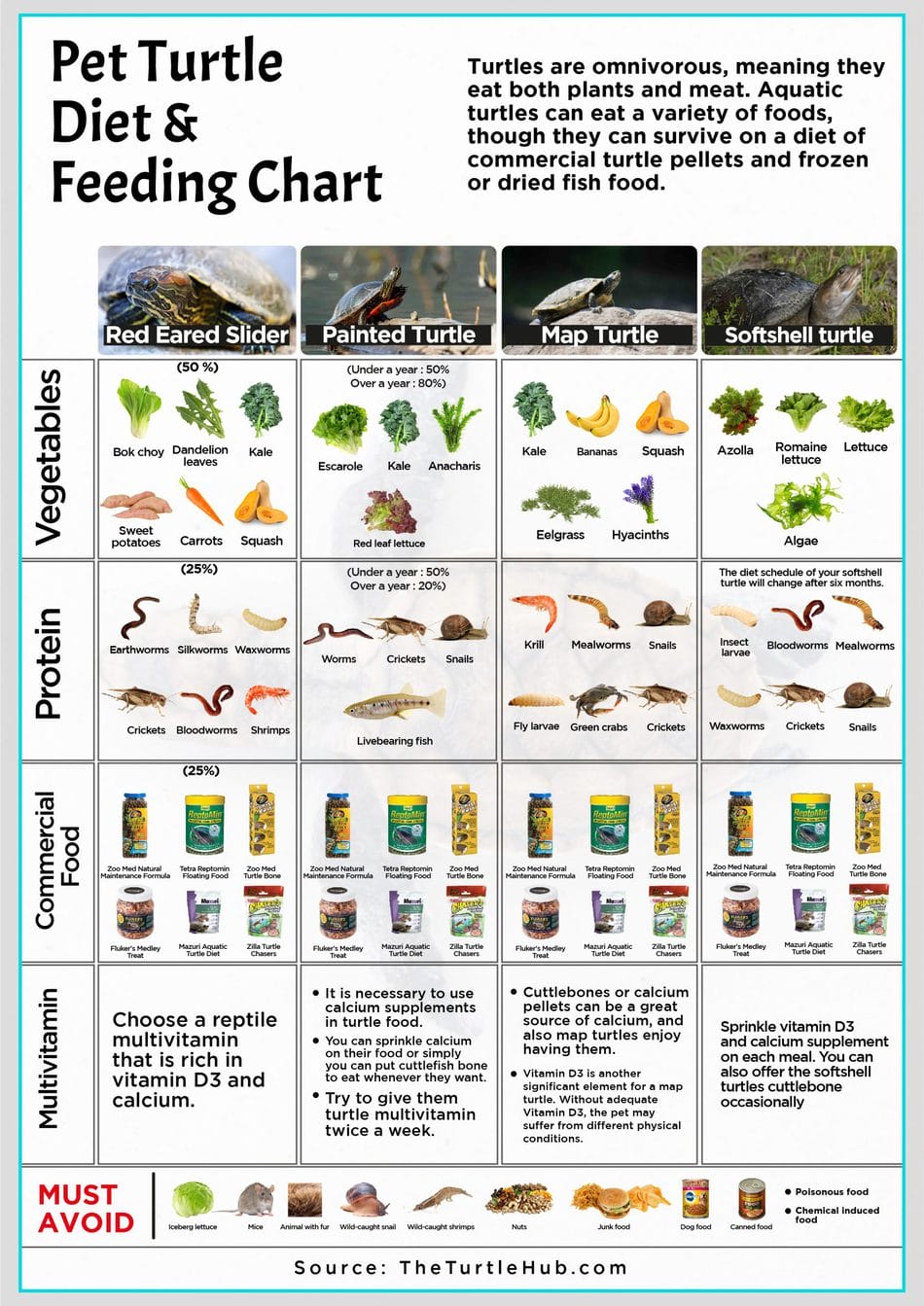
Quick Troubleshooting Guide
My turtle won’t eat
Possible causes:
- Water temperature too low
- Vitamin A deficiency
- Stress from recent move or tank change
- Illness
- Trying to brumate (if conditions are cold)
Check water temp first. If that’s fine and they don’t eat for more than a few days, see a vet.
My turtle is floating funny/can’t dive
This is often a sign of pneumonia or respiratory infection.
Get to a reptile vet ASAP.
My turtle’s shell is shedding
Painted turtles naturally shed thin keratin scutes as they grow.
This is normal. You might see clear, thin pieces coming off.
If there’s bleeding, odor, or thick crusty material, that’s shell rot. See a vet.
My turtle is super active at night
Painted turtles are diurnal (active during the day).
If yours is active at night, your lighting schedule might be off, or they’re stressed.
Final Thoughts: Is A Painted Turtle Right For You?
Let’s be honest here.
Painted turtles are gorgeous. They’re fascinating to watch. And when you get their setup right, they’re actually not that hard to care for.
But they’re not beginner-friendly in the traditional sense.
You need a big tank, expensive equipment, and a willingness to do water changes for the next 30-40 years.
They’re not cuddly. You can’t take them for walks. They won’t recognize you (okay, they might recognize you as “the food god,” but that’s it).
Many sources actually recommend painted turtles for intermediate or experienced keepers rather than absolute beginners.
But if you’re willing to put in the work? If you’re fascinated by these little aquatic dinosaurs and want to provide them with a proper home?
Then yeah. Go for it.
Just do it right. Your turtle will live for decades, and they deserve those decades to be good ones.

About Author
Muntaseer Rahman started keeping pet turtles back in 2013. He also owns the largest Turtle & Tortoise Facebook community in Bangladesh. These days he is mostly active on Facebook.


